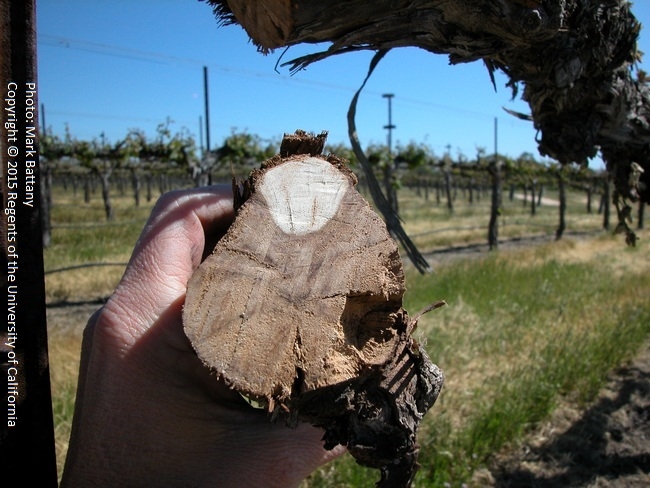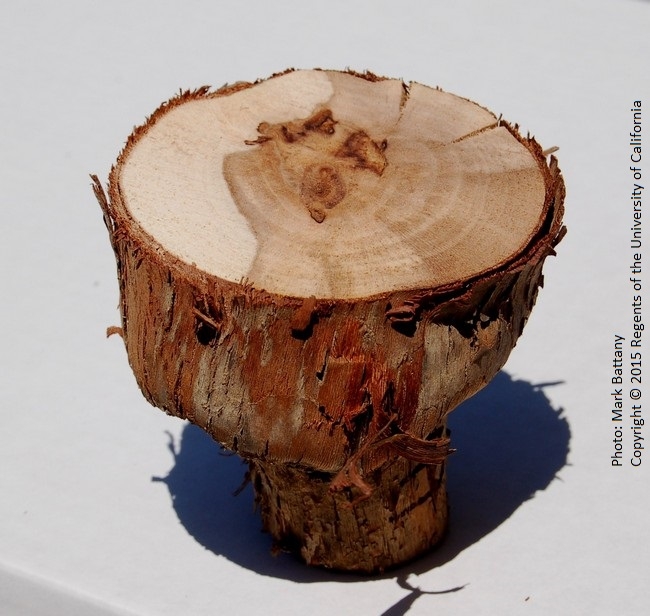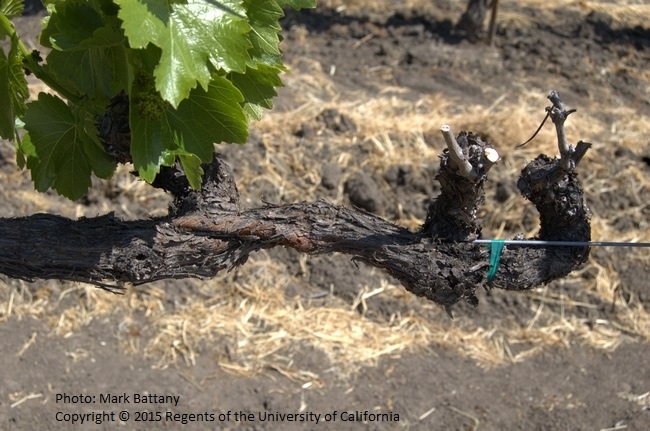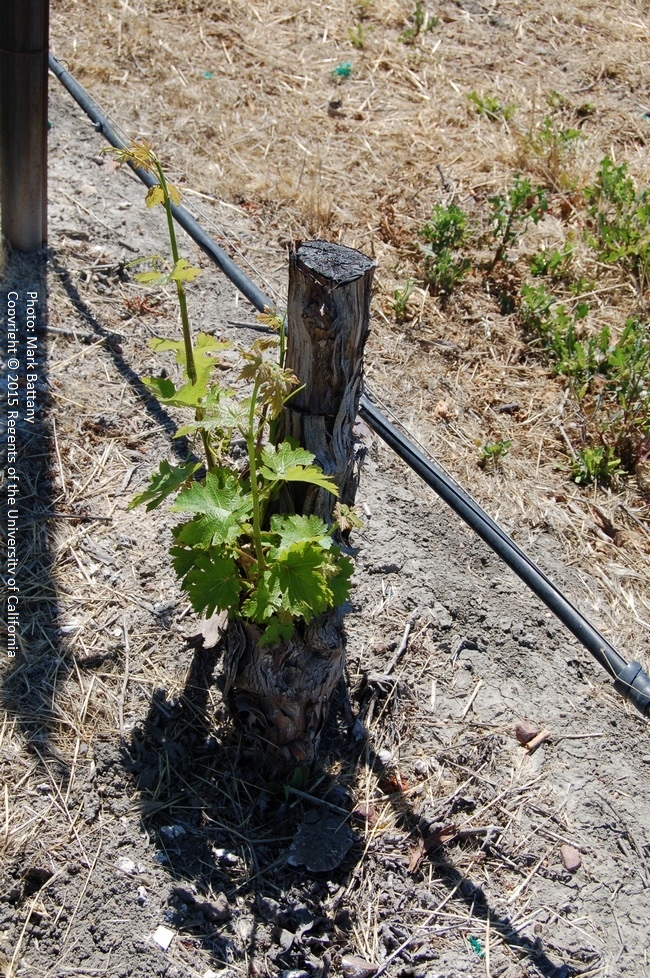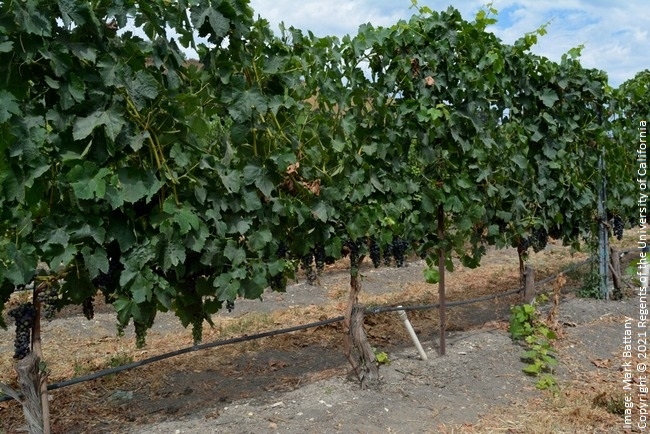- Author: Mark Battany
Most vineyards in this area will show increasing infections of wood-rotting fungal pathogens as they become older. Both the Eutypa and Bot Canker pathogens are found in local vineyards, and vineyards often have mixed infections. Numerous vineyards begin to show symptoms of infections by the time that they are ten years old, indicating that the infections began quite early during the life of the vineyard; making efforts to prevent these infections from happening in the first place needs to be the foundation of any management program.
Exterior symptoms of canker infections generally include dead spurs or cordons; if a cut is made through a symptomatic cordon or trunk, a dark wedge of infected wood is usually visible. Infections begin at wounds such as pruning wounds. As the infections grow in the vine, productivity will decline and the if allowed to continue too far the vine will not be salvageable. Renovation needs to occur well before the infection becomes this severe.
Renovation of a vineyard is a common practice to remove all infected wood and to give the vines a "fresh start". In order for this to be successful, the root system needs to be healthy and the wood remaining after pruning needs to be completely free of the disease pathogens. If the infections have reached the lower trunk, the renovation will not remove the pathogens and replanting will be the only option. If cuts through the lower trunk reveal dark wedge-shaped cankers, this indicates that the infection has progressed very deeply.
The first step when evaluating renovation options for that block is to assess the extent of infection of the vines; this can only be done by cutting through the symptomatic cordons and trunks to see how deeply the infections have progressed, and to estimate what percentage of the vines will not recover from a full renovation.
If the level of infection is light overall, the renovation is sometimes done piece-meal, with vines managed individually as deemed appropriate for their level of infections. This results in less uniformity of the block, but it has the advantage of maintaining continual production. In older vineyards where the cordons have grown around the wire necessitating its removal, it may be very difficult to manage vines individually in this way, and a full renovation may be more appropriate.
Full renovation consists in cutting off as much of the above-ground growth as possible to all vines in the block at once during the winter. Protecting the large exposed cut trunk with suitable wound paint and other protective strategies is critical at this time to prevent new canker disease infections from occurring. Own-rooted vines can be cut down all the way to the soil line, thus removing as much of the potentially diseased trunk as possible. For grafted vines, some of the scion needs to remain intact, if that same variety is intended to grow for the renovated vine. Renovation is also a convenient time to graft over to another variety, or to change from cordon to cane training or vice-versa.
Because the existing mature vines have fully-formed root systems, shoot growth in the first season after renovation is typically profuse and very vigorous; if not, this may indicate that the vines were allowed to become too weakened before being renovated. To avoid excessively large internode spacing on the shoot which will be trained as a trunk and cordon(s), it is common to allow more than one shoot to grow out during the first season after cutting. These extra shoots are removed later in the summer or at pruning.
If the root system is strong and healthy, a full trunk and cordons can often be formed or nearly formed in the first season after cutting, and a crop can generally be produced in the second season; no crop is attained in the first season, rather the new vine structure is created.
The Eutypa and Bot canker fungi will remain alive in the sections of trunk and cordon which have been cut off; if these pieces are left within or near the vineyard, they serve as a source of spores to create new infections. Therefore it is important to dispose of these pieces by burning or removal from the site.
Managing vineyards to minimize infections with trunk disease pathogens in the first place will help ensure that vines remain healthy and productive for many years, reducing the need to ever renovate the vineyard. The SCRI Trunk Disease Project Page has useful information on appropriate practices.
Additional management information focusing on preventative practices is available in the UC ANR pamphlet titled "Guide to Vineyard Trunk Diseases in California"
For detailed information on the biology of the trunk disease pathogens, refer to pages 104-116 in the UC ANR book Grape Pest Management, Third Edition.
For information on the use of fungicides to prevent infections, see the UC IPM website for Eutypa and Bot Canker.

